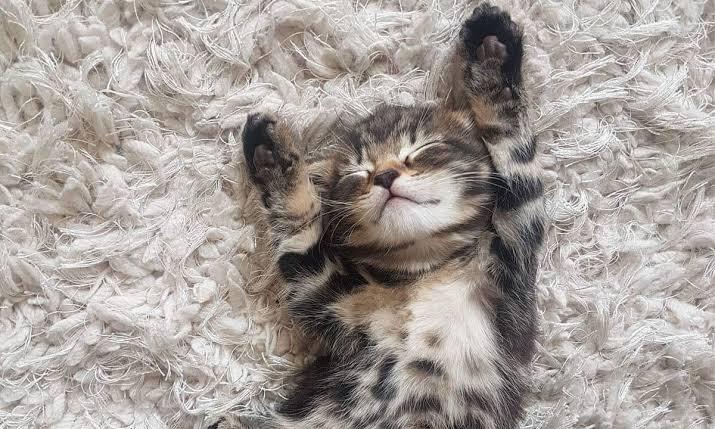10 COMMON CAT DISEASE?

Cats are small, carnivorous mammals often kept as pets. Known for their agility, independence, and playful nature, they have been companions to humans for thousands of years. Cats are valued for their ability to hunt pests like mice and rats, as well as their affectionate behavior.
10 Types of disease in cat
1. Feline Upper Respiratory Infection (URI)
URI in cats is like a common cold in humans. It is caused by viruses like feline herpesvirus and calicivirus. Cats may sneeze, have watery eyes, and develop nasal discharge. URIs spread easily in shelters or households with multiple cats.
Symptoms:
- Sneezing
- Coughing
- Runny nose
- Fever
Prevention: Vaccination and good hygiene.
2. Feline Leukemia Virus (FeLV)
FeLV is a virus that affects the cat’s immune system. It can lead to cancer or blood disorders and is spread through saliva, nasal secretions, and close contact with an infected cat.
Symptoms:
- Weight loss
- Poor coat condition
- Pale gums
- Infections that don’t heal
Prevention: Keeping your cat indoors, FeLV vaccination.
3. Feline Immunodeficiency Virus (FIV)
FIV is similar to HIV in humans, causing a weakened immune system. It is spread through bites from infected cats, usually during fights.
Symptoms:
- Recurring infections
- Weight loss
- Inflammation of the gums
- Diarrhea
Prevention: Keeping cats indoors to avoid fights and wounds.
4. Feline Panleukopenia (FPV)
This is a highly contagious viral disease, often fatal in kittens. FPV attacks the cat’s gastrointestinal system, leading to dehydration and weakness.
Symptoms:
- Vomiting
- Diarrhea
- Dehydration
- Fever
Prevention: Vaccination.
5. Kidney Disease
Kidney disease is common in older cats. It can be chronic (long-term) or acute (sudden onset). Kidney disease affects a cat’s ability to filter toxins from the blood.
Symptoms:
- Increased thirst
- Frequent urination
- Weight loss
- Vomiting
Prevention: Regular vet check-ups, proper hydration.
6. Diabetes
Diabetes in cats occurs when their body cannot regulate blood sugar properly. It’s common in overweight cats and can lead to serious health issues if not managed.
Symptoms:
- Increased thirst
- Weight loss despite eating well
- Lethargy
- Frequent urination
Prevention: Healthy diet and weight management.
7. Dental Disease
Many cats develop dental problems like gingivitis or periodontal disease. This can cause pain, tooth loss, and difficulty eating.
Symptoms:
- Bad breath
- Difficulty chewing
- Drooling
- Swollen gums
Prevention: Regular dental check-ups and brushing your cat’s teeth.
8. Heartworm Disease
Heartworm is less common in cats than dogs but can still be dangerous. It’s caused by worms that live in the heart, lungs, and blood vessels, spread by mosquito bites.
Symptoms:
- Coughing
- Difficulty breathing
- Lethargy
Prevention: Heartworm prevention medication.
9. Hyperthyroidism
This is a condition where the thyroid gland produces too much hormone, speeding up the cat’s metabolism. It is common in older cats.
Symptoms:
- Weight loss
- Increased appetite
- Hyperactivity
- Vomiting
Prevention: Early diagnosis and treatment.
10. Obesity
Obesity in cats can lead to other health issues like diabetes, arthritis, and heart problems. It is important to manage your cat’s weight with a healthy diet and exercise.
Symptoms:
- Excessive weight
- Difficulty moving
- Shortness of breath
- Sleeping more than usual
Prevention: Balanced diet and regular exercise.
Cats can pass diseases to other animals or humans in several ways:
1. Direct Contact
Cats can pass diseases through direct physical contact with an infected cat. Grooming, playing, or fighting with other cats can transfer viruses, bacteria, and parasites.
2. Saliva
Diseases like Feline Leukemia Virus (FeLV) and Feline Immunodeficiency Virus (FIV) can be spread through saliva, particularly during biting or sharing food and water bowls.
3. Nasal and Eye Secretions
Cats with respiratory infections, such as feline herpesvirus, can transmit diseases through sneezing or nasal discharge, which can infect other cats in close proximity.
4. Feces and Urine
Some parasites, like Toxoplasmosis, are passed through contaminated feces. Infected cats can spread these parasites if other cats come into contact with their litter or outdoor spaces.
5. Fleas, Ticks, and Mosquitoes
External parasites can carry diseases like feline heartworm or bartonellosis (cat scratch fever). Fleas and ticks can transfer pathogens when they bite cats or other animals.
6. Mother to Kittens
A pregnant cat can pass infections like Feline Leukemia Virus to her kittens during pregnancy, birth, or while nursing.
To prevent disease transmission, regular veterinary check-ups, vaccinations, parasite control, and maintaining good hygiene are crucial for cat health.
These are some of the most common diseases that can affect cats. Regular veterinary visits, vaccinations, and a healthy lifestyle can help keep your feline friend healthy and happy.





